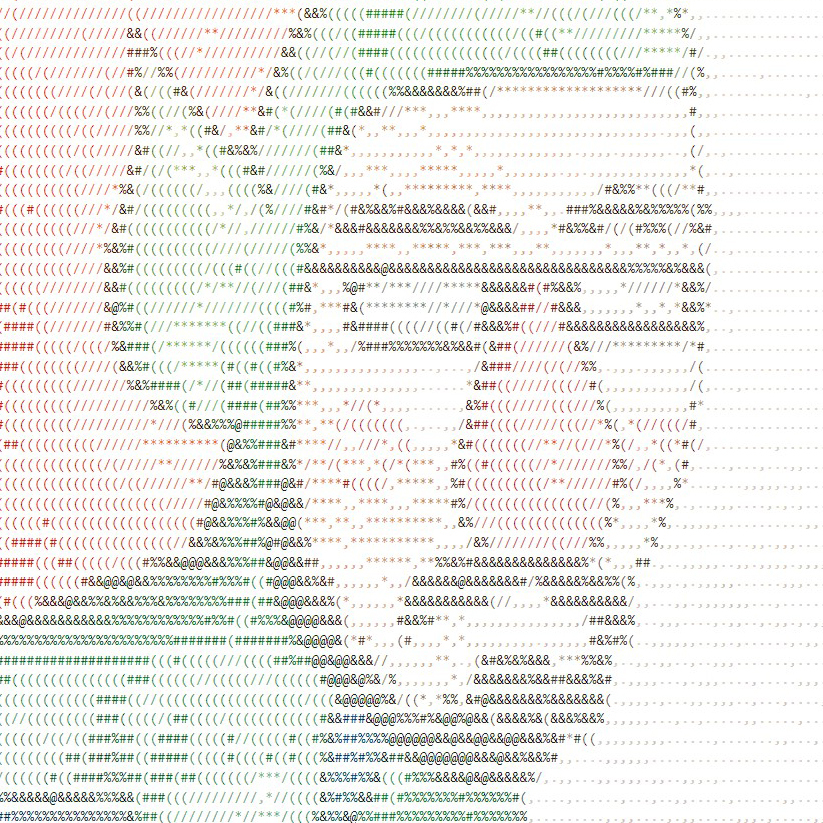I see the phrase ‘ahead of it’s time’ used a lot like a long with words such as ‘underrated’ or ‘epic’ or ‘literally’, or ‘ironic’. I read how ahead of it’s time is used for literally any popular game that it alters the meaning of the phrase.
Anyways here is a list of games I feel would have sold or been more known had they been released several years in the future:
- Jurassic Park Trespasser: the YouTube channel ResearchIndicates and one of the most informative Let’s Play videos of all time best explains this game.
JPT had a rather ambitious physics engine AND open world environments which seemed pretty much undoable at the time, along with non gameplay breaking story flow with Attenborough himself. But just like with No Man’s Sky the hype engine and promising too much got the devs way over their heads and failed. Valve was able to continue what JPT started with Half Life, but I imagine if it had more time JPT could have been an immersive classic.
-
Time Splitters Future Perfect an FPS with sharable Map Creation content. The problem I feel was many people didn’t try this as Halo’s Forge wasn’t out yet to bring to light what user content can really do, and less accessible online play at the time.
-
Tony Hawks Pro Skater 3 Okay this doesn’t count, but I just want to mention this because the official Sony Network Adapter wasn’t even out yet when this released. You have to use a specific brand of Linksys or D-Link USb to Ethernet adapter on your PS2 to get it to work 😄. So I classify this ahead of it’s time due to the first party product not existing yet.
-
Psychonauts. This was an easy one, non Mario platformers weren’t the trend among the ocean of best selling Xbox titles. Thankfully A Hat In Time much later showed the more mainstream appeal of small dev platformers.
-
Dragon Quest 1 & 5 in the US. Not in Japan as you could shut down Japan for a day with the release of a new Dragon Quest game (tip for invaders). DQ has always struggled in the US partly due to, oddly enough, taking so long to reach the US. It’s a mix of too early and too late, with DQ 1 inventing the traditional console RPG format, and DQ5 being Pokemon before Pokemon, to quote Tim Rogers. But early DQ games releasing far too late on the NES life and not releasing on SNES I feel could have made DQ games closer to FF games in the US
-
Puzzle Quest Challenge of the Warlords: a Match 3 game in the early days of Xbox Live arcade.
The timing would have had to be tight on this, had it come out around the time of monument Valley it would have been perfect to expose casuals to a match 3 game with more depth to it
But it was too easily for the match 3 craze, and now too late for the oversaturation of match 3 mobile games.
- Eternal Darkness Lovecraft is all the rage among public domain IPs nowadays. Eternal Darkness was all the fun of bizarre 4th wall breaking spooks combined with non frustrating old school Resident Evil like gameplay. more of a wrong place wrong time kind of thing, in an attempt to bring a more mature crowd to the GameCube is underperformed.
I would love to see Nintendo at least attempt to emulate it on the Switch somehow.
A quote from a review of the game Alien: Resurrection written in 2000:
The game’s control setup is its most terrifying element. The left analog stick moves you forward, back, and strafes right and left, while the right analog stick turns you and can be used to look up and down.
You may recognize this as how every console FPS works now, but it earned the game a 4.7/10 at the time.
If that didn’t make it ahead of its time I don’t know what would. Thanks for sharing!
Kind of reminds me what half-life did for PC controls
I was about to post this. Amazing how things change.
Well that is hilarious xD
Also I claim this as further evidence that people are too quick to hate on novel control schemes, today too. The standardization of controls is in some ways great and in other ways very limiting - I hope for more variety and experimentation in this regard to be accepted one day.
Another World had the whole cinematic gaming figured out back in times the floppy disk, lengthy intro included. Took about 15 years for the rest of the industry to catch up.
Elite procedural open world universe in 3D all the way back in 1984. The sequel in 1993, Frontier: Elite II even let you land on planets.
Magic Carpet, fully destructible terrain in 1994 along with an interesting mix of (very light) RTS and FPS. Later on Red Faction and Red Faction: Guerrila offered even more destructibility. While we have some modern games like Teardown that focus on destruction, it’s still not a commonly seen feature in games. Magic Carpet is also still the most “3D” game I am aware of, supported almost everything, VR headsets, red&green glasses, even MagicEye-style auto stereograms.
EF2000, flight simulation with a full dynamic war simulated in the background. Falcon 4.0 improved on it. Carrier Command might be an even earlier example of similar mechanics. Mainstream gaming still hasn’t really had anything similar as far as I can tell and relies on scripted events instead of a simulated world.
Boulder Dash Construction Kit (1986), might not have been the first, but one of the early games including a fully featured and easy to use level editor.
I was coming to scream “Another World” here. We played the future hard with this one. So many games are essencially Another World.
I would also add Shenmue on the Dreamcast. It was the first open world sandbox action/adventure game, with an amazing amount of content, and realistic (for the time) character modeling and animation, but sadly, few people played it. Many more people played Grand Theft Auto III, which came out several years after Shenmue.
Shenmue is a good example, I was hyped for it back in the Dreamcast days. I’m fairly certain we have quick time events to thank shenmue for popularizing, for better or for worse.
For better because wonderful 101 created the greatest quick time event of all time
deleted by creator
Add to that Ultima Underworld - the first FP hack + slash, paved the way for Elder Scrolls. The fully immersive plot in 2 where you went into different worlds all with their own backstory was huge. The magic system was pretty good too
I wish there were a version of Nethack that had modernized controls at least, if not also modernized graphics. I remember it so fondly but it’s a real headache to go back to these days.
Shattered Pixel Dungeon (PC & mobile) is the closest thing I’ve found to it these days, but it’s still quite different.
1 set of games that felt ahead of their time were Pokemon Gold/Silver and Crystal.
They had so many interesting mechanics and mechanics that (for some reason) were not introduced in the later games that it almost feels like robbery.
- Day/night time switch with corresponding pokemon. I remember you could encounter night specific pokemon and also daytime pokemon in the night who were fast asleep when starting the battle.
- Two regions in 1 game.
- End boss as Red in MT silver
- Rematches with trainers.
- Pokewatch system overall
- Hapiness system for Eevee evolutions
- The encounter system for suicuine, Entei and Raikou
- Pokemon crystal with the Battle tower.
- Moving sprites in pokemon crystal.
Probably even more, but for me it is still the best designed pokemon game to date and really ahead of it’s time.
It also felt like one of the last games that was oozing with the passion that the developers put in it.
Big Rigs Over the Road Racing would have blended in inconspicuously on Steam had it released 10-15 years later. At the very least it would no longer be remembered as “the worst game ever”, and it may even have gained some “so bad its good” meme fame from streamers and made some sales.
In a way, Crysis. There’s a reason the “But does it run Crysis?” meme exists. Because most computers could barely run it on release. It was way ahead of its time technologically.
Almost the same with far cry used for Benchmarking years later
The water effects in Far Cry 1 were absolutely mind blowing at the time. It was one of the first things in a video game that I could feel the tangible stress it placed on the GPU. I could be looking away from it then as soon as it came into my field of view my GPU fan would sound like it was trying to fly off the motherboard.
Also in terms of gameplay, the freedom, the destructibility of the environment, there was a lot of really cool stuff you could do in the game. Later sequel sadly all turned that down and into a regular linear shooter.
I think System Shock belongs here too. It was an immersive sim in 1994, was one of the first games to make use of audio logs, and had 3D models and environments before Quake. It initially released on floppys without voice acting so it didn’t sell too well, and it wasn’t until later that it started getting more widely appreciated as the groundbreaking title it is. Another thing is that the controls and graphics can make it a bit of a pain to play today - this was before WASD and mouselook were standardized.
I think the first Deus Ex belongs there too. I played it a couple of years ago and was still impressed by the attention to detail
The original Deus Ex holds up better than most anything else of that era, imo, at least as someone who came to it post-Human Revolution release and didn’t have nostalgia goggles. Such an incredible game.
One thing I find really cool about it, weird as it may sound, the deliberately kind of blind AI. Apparently they originally had “better” AI that could see you from farther away, but discovered it was more fun if they were a little dumber, and in practice you can just accept that as you play. The dumb ai becomes invisible, at least to me, even though it isn’t invisible. Like inventories, I guess - just a video game thing to accept as a base premise and not worry about.
Honestly, anything developed by Looking Glass or Ion Storm (or basically just Warren Spector).
Thief is another one. Still does things that other stealth games don’t, although Dishonored gets pretty close and they wear that influence proudly on their sleeve (see: Stephen Russell voicing Corvo in Dishonored 2).
Thief seemed really cool for a while, coming to it for the first time sometime after the release of Deus Ex: HR, but then I got really stuck in the weird sewer monster level which felt out of place. Ran out of arrows, couldn’t find my way through it, gave up 🙃
Yeah, parts of Thief can get weird. It kind of lulls you in with a regular medieval world and then a bunch of weird fantasy stuff and supernatural monsters come in.
I once accidentally quick saved just before a zombie thing killed me. That first quick load was a surprise.
Admittedly, the game in general has quite a few issues in terms of being accessible to modern audiences (mods help, and there are quite a lot). It got streamlined a lot by the time of the third game (it was also the first on console, so it had to be more accessible).
But man, that third game goes hard in one level that’s absolute survival horror. Shit still sticks with me today. That level was honestly a little terrifying. Like, I absolutely hate survival horror, but it’s probably one of the best designed levels I’ve played in a game. Even has its own Wikipedia entry!
I personally think Thief II: The Metal Age is the best because it sticks to a more steampunk kind of feel. There’s still a fantasy element, but it’s a bit less pronounced and there’s not much horror (it’s the one I feel influenced Dishonored the most), although I haven’t played it in a while and might be misremembering.
Fun fact about the first game, though: Ken Levine worked on some of the lore and level design. Eventually went on to develop System Shock 2 and eventually BioShock.
Fun fact about the third game: one of the level designers for the horror level went on to work with Levine on BioShock and worked on the level design for the “Fort Frolic” section of the game, which also had a bunch of horror vibes (more than the rest of the game, at least, which leaned into some horror a fair amount already).
I played the original floppy version and even without the voice acting it was an incredible experience. The enhanced version just took it to the next level.
I’ve really been enjoying the remake so far.
In addition to all that, due to its persistent world and the fact that you could (and in fact had to) backtrack to previously inaccessible areas after finding upgrades such as radiation suits and rocket boots, it was also an early example of a metroidvania. And by “early” I mean “three years before Symphony of the Night”. Yeah. It was that ahead of its time.
Farcry 2, IMO, was pretty far ahead of its time.
Being able to shoot individual limbs and twigs from trees.
Fire, that would intelligently spread.
Weapon durability which was visually impacting, as well as alerted the firearm’s performance.
It had some really cool features for its time.
I still don’t think a game has used fire as effectively as this did, before or since. Even in later Far Cry games seem to have a much more fire-lite implementation.
I can confirm- me and the wife just finished playing farcry 6, a week ago.
Fire… is meh. It doesn’t spread. I remember having damn wildfires on farcay 2, which would be extremely dangerous.
Even, the physics for shooting limbs from trees appears to be gone now. That was a really cool feature.
For repairing cars, in far cry two, you would pop the hood, and do some stupid junk (that in no way would actually fix a car), but, it look pretty cool. In far cry 6, you just point a blowtorch as the body of the car.
you just point a blowtorch as the body of the car.
I melt the broke.
Car good now.
Same for healing. They included differen animations for different injuries, at least to some extent.
If the last damage you received was explosive the PC would pull shrapnell or a stick out of his leg.
It was such a visceral, immersive game.
some genre pioneers
- M.U.L.E. (Multiplayer Strategy)
- ELITE (3D space sim)
- Populous (Godmode RTS)
- Maniac Mansion (Point & Click)
I rented Populous for SNES as a kid but they didn’t have a manual so that was a pretty tough one to figure out.
Played the crap out of Maniac Mansion but didn’t realize it was before the PC point and click craze
I rented Populous for SNES as a kid but they didn’t have a manual so that was a pretty tough one to figure out.
Same for me, on the Amiga500, especially finding out how hero-raids and Armageddon work ^^
Played the crap out of Maniac Mansion but didn’t realize it was before the PC point and click craze
Got it on the C64, did you find out all five possible endings?
I freaked out finding the fuel for the chainsaw in Zak McKracken and the Alien Mindbenders ;)That and gave Ed his microwave hamster. I even tried to stay up late to watch the Maniac Mansion TV show but didn’t understand the VCR too much
I often hear about the original “Elite” in this context. It managed to do real time 3d rendering on home computers (albeit wireframe) in a time when that was usually relegated to pre-renders or supercomputers. Came out a good decade before making 3d games was more generally viable.
To properly qualify how groundbreaking Elite was for the time, for those who don’t know it: it was a space sim that simulated 8 galaxies with 256 star systems each, each system with a star, a planet, and a space station. All of that was wireframe-3D rendered, had a lot of complexities like different ship and enemy types, different playloops like trading, mining and combat, and it was one of the few games of that time that pioneered open-world gameplay.
This was initially released on the mid-80’s for 8bit computers of the time, which had anything between 48Kb to 128Kb of RAM, and thus, the game binaries was also that small - they accomplished that by also being one of the few games of the time that pioneered procedurally generated content.
Elite was released in 1983. It was originally made on and for the BBC model B, which had 32Kb of RAM!
Wikipedia and other places says 1984 - I think 1983 is when development started. I wasn’t quite sure how much RAM the BBC Micro had, so I played safe and went with the ZX Spectrum’s configuration, which I had, although thinking about it now, the way the Speccy mapped memory meant that it actually had about 32Kb useable RAM as well. I don’t know how the BBCM mapped memory, so I’m not sure if a similar situation applied (less actual available memory).
Not a game, but the Dreamcast as a system. Supported online play that was not/under utilized. Had a mini screen in the save game cartridge. I miss that system.
Finally got one a couple of years ago. Absolutely adore the thing. It also had incredible accessories that I’m still missing.
Fishing rod, steering wheel, keyboard, light gun…
It did a lot of thing that didn’t really happen again until the wii.
Phantasy Star Online.
Crazy Taxi.
Shenmue.
Dreamcast had a few really cool unique games.
Metropolis Street Racer (the better known sequel being Gotham Street Racing on the XBox) was ahead of it’s time, that they mapped out whole areas of a city and then divvvied it up into racetracks was mindblowing.
Midtown Madness did that to Chicago a couple years earlier. I seem to recall Vette did San Francisco? but I never saw it. Of course, Flight Simulator 2 did Seatle. ;-)
Midtown Madness was more of an approximation of Chicago whereas MSR was a proper scale recreation of a 2km square for each of the 6 areas; every alleyway, every building (plus it had realistic physics). You could learn an area in MSR and then know your way around in real life.
At the time that was super futuristic
I’m disappointed to find out I haven’t actually learned to get around the real Chicago, but that sounds very cool! I can’t think of a well known game with a faithful representation of a city prior to I guess Spider Man? That’s a big gap.
To think that in a few years, using real city locations will be the cheapest and easiest option, certainly as compared to building something convincing from scratch.
How was the post-apocalyptic Seattle representation in The Last of Us 2, do you know? Like, did they just throw the space needle in there somewhere, or was it in any other way recognizably the Seattle area (but post-apocalypse) otherwise?
Absolutely! Newer racing games often use scans of the real life racetracks to get the details right; when I prepared for a track day at Cadwell Park (a notoriously complex circuit, it’s tight with lots of weird corners) I picked up a copy of Project Cars and by the time I was there I already knew the layout enough to settle into the finer details of the corners within a couple of laps.
When the same level of detail is available for actual cities it’s going to very interesting to see how people react
Deus Ex (2000)
Ultima Underworld
It came out before Doom, had full isometric 3D environments including looking up and down, and contained immersive sim and RPG elements. All the ingredients of a modern first person action RPG… in 1992.
Silent Hill and Resident Evil 1 for PS1
The radio in Silent Hill was genius. Rather than making the game easier, it amped up the tension when that static started up. Especially in the dingy locales that made up the majority of the game.
I loved the camera view shifts and the fog elements, the whole game atmosphere knew how to go under you skin.
I love how they used the console’s limitation to improve the game!














